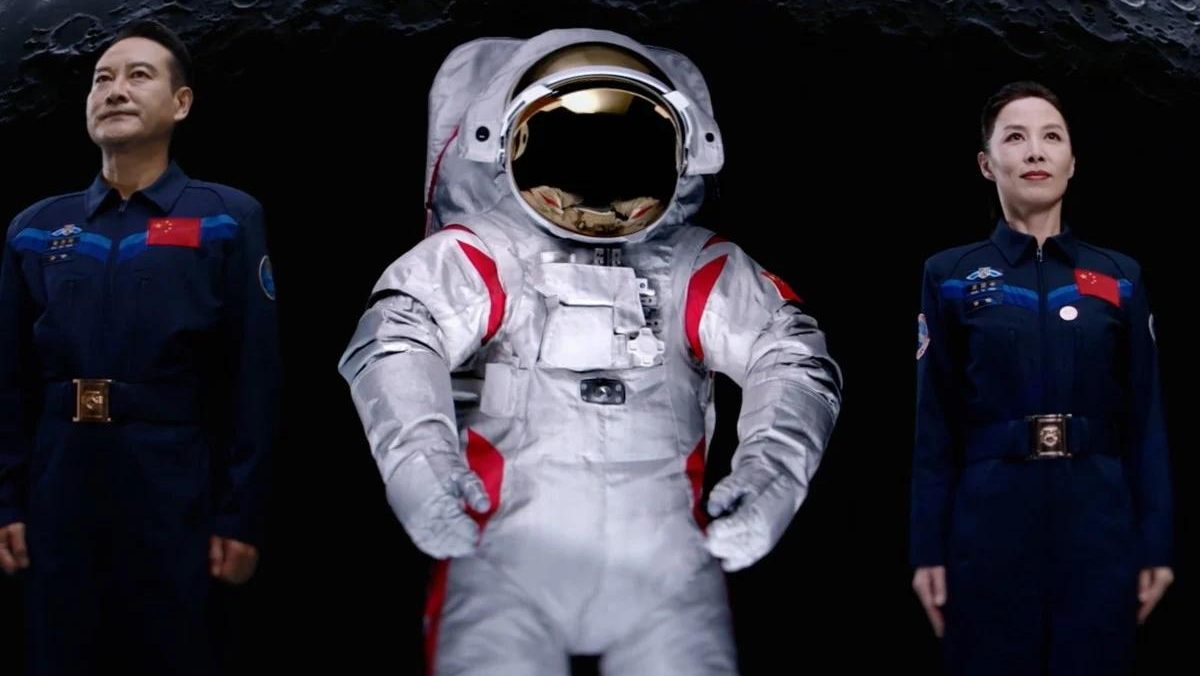CHINA: China is confident about landing on the moon by 2030. China’s Manned Space Agency (CMSA) recently also unveiled its specially designed spacesuit for the mission.
According to a CNN report, the spacesuit, which is in red and white, is made to withstand the moon’s extreme temperatures, as well as radiation and dust, while allowing astronauts physical flexibility tasks on the lunar surface.
According to a video shared by state broadcaster CCTV, it is equipped with a built-in long and short-range camera, an operations console, and a glare-proof helmet visor.
The video features Chinese astronauts Zhao Zhigang and Wang Yaping as they demonstrate how astronauts wearing the suit are still able to move in an agile manner by bending and climbing a ladder.
The new suit, with its innovative technology, also captured the attention of Elon Musk. The SpaceX CEO posted the CCTV video on his platform X with the following caption;
”Meanwhile, back in America, the [Federal Aviation Administration (FAA)] is smothering the national space program in kafkaesque paperwork!”, he said. He was referring to the speed in which China had shored up its space program compared to the US.
#AmazingChina Don’t be jealous! Inspired by traditional armor, the new lunar landing spacesuit unveiled by China has gained a buzz on the Internet. Canadian retired astronaut @Cmdr_Hadfield and CEO of SpaceX @elonmusk were very interested in it too👀 pic.twitter.com/N9MpZx05vj
— Shenzhen Channel (@sz_mediagroup) September 29, 2024
China is trying hard to establish itself as a significant player in space. The China National Space Administration has carried out a series of complex robotic lunar missions, including the first-ever return of lunar samples from the moon’s far side this year.
China hopes to become the second country to land astronauts on the moon, saying its first crewed mission will occur by 2030. The United States has not sent any astronauts to the moon since 1972, although it plans to send a crew this decade.
According to NASA, temperatures on the moon are extreme, climbing to as high as 121 degrees Celsius during the day and then dropping to -133 degrees Celsius at night.
In an interview with CCTV, the deputy chief designer of astronaut systems at the China Astronaut Research and Training Center, Wu Zhiqiang said: “Unlike low-Earth orbit missions, astronauts will be in a harsh natural lunar environment during lunar extravehicular activities.
Complex environmental factors such as high vacuum and low gravity, lunar dust and lunar soil, complex lunar surface terrain, high and low temperatures, and strong radiation will have a significant impact on work and protection.”
China state media praised the suit, saying the red stripes on the upper limbs were inspired by ribbons from the “flying apsaras” or deities that appear in ancient art in western China’s Dunhuang city. In contrast, those on the lower limbs looked like “rocket launch flames.”

